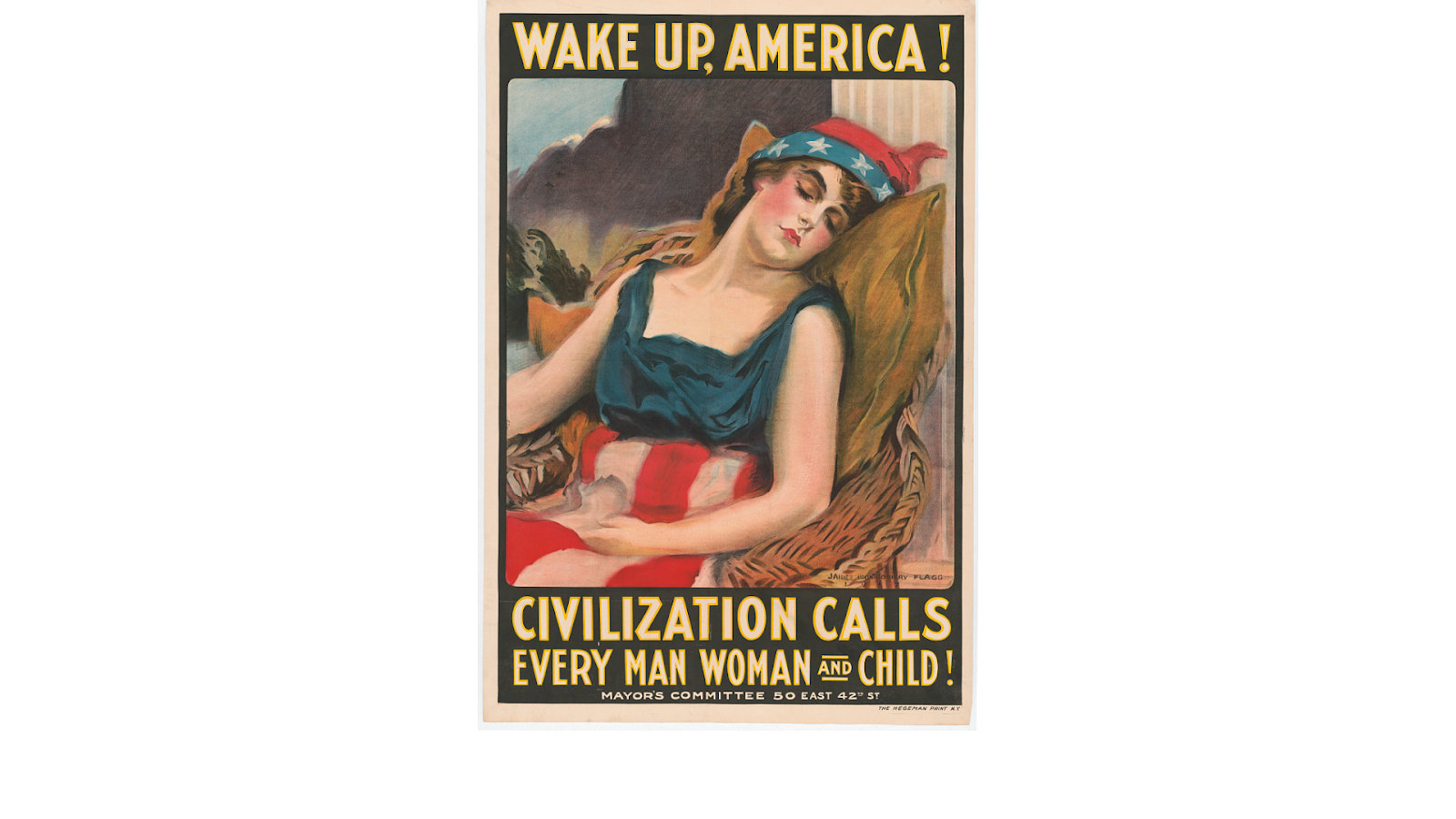Early Modern and the Influence of WWI
The post-modern era was full of art regarding many different subjects such as the great depression, science and technology, the influence of African Americans, and the topic that I am going to touch on, World War I. WWI had a heavy influence on the art during this time period because of how much it affected people's lives. It forced people to leave their homes, caused families to be split, and resulted in heartache for those who lost loved ones. These, along with other feelings, can be felt when viewing these works of art.
Back from the Fight by Harry Townsend, 1918
One example of WWI influenced art is Back from the Fight by Harry Townsend. Townsend was not only an artist but he was also involved in the war himself. He was "one of eight accomplished World War I combat artists sent to France by the American Expeditionary Forces (Ali Sorbara, 2018) Made in France, this painting depicts actual scenes from the war, not one made up to prove a point or changed for the aesthetic appeal. The goal of his work was to spread awareness for the war and to help the public understand the sacrifice the soldiers were making. Even after the war had finished, Townsend spent his time crafting beautiful masterpieces, showing both the good and bad of war.
The shapes in this painting are mostly circular, with no particularly sharp corners. Circles often represent unity, and I believe that this was used to represent unity among the troops and the nation. Everyone had to come together to be successful in this war, and I believe that is what Townsend was trying to represent in this work through his use of shapes.
I would like to have this work in my home if I had the opportunity. This piece shows the soldiers in the field, serving the country I call home. I would not have a place to live if it weren't for people like them. It shows their dedication and sacrifice, and I would be honored to be able to hang this piece for anyone to see.
On the Wire by Harvey Dunn, 1918
Also made in France, On the Wire by Harvey Dunn depicts two soldiers carrying their fallen brother of arms. As seen in this work, one of the soldiers has their head down as if he is in disbelief that their friend has died. I believe that Dunn made the scene foggy to represent the depression that the soldiers must feel when losing a friend. The emotions felt in this painting are hard but necessary. It helps people remember those that have lost their lives in the war, and keeps them in our hearts for generations.
Pattern can be seen in this painting through nature. The vegetation in the terrain is very repetitive, which could represent the feeling of repetition that the soldiers must have felt during the war. Long days, working 7 days a week, never getting a break. I think that this painting not only shows what war was like for these men but also makes the viewer feel empathy for them. Often people see war as just a physical battle, however, it's also a mental one.
If I could, I would like to have this painting in my home or even a replica. It portrays the struggle that soldiers had, and have, to go through every day. I would love for this to be seen by people around the nation so they can appreciate the sacrifice of our American heroes.
Wake up America! Civilization calls every man, woman and child! by James Montgomery Flagg, 1917
Campaign posters such as these were hung around cities and towns around America to try to get people to join the military or to get to work. When all the men went off to war, women and children were called to fill in the positions that were left. Actress Mary Arthur is the woman portrayed in this work. She is supposed to represent America because she is sleeping, being called to wake up. The phrase “wake up” is not meant literally, but rather figuratively representing the need for determined, hard working people. This poster was designed in New York and featured in "Wake Up, America" on April 19, 1917. This work is a great example of how art influenced the war and contributed to the number of people that enlisted in the military and the work force. Artwork is not only used to document what has happened but also to try to influence the future.
The colors in this work are bright and vibrant, but they have more meaning than just catching the eye. They represent the United States. The red, white, and blue of her outfit make her look patriotic, yet she is still sleeping, symbolizing the people of America that have not made an effort to help their country. This piece has a deeper meaning than just an appeal to the eye, it is a call to help our nation.
I would love to have this poster because it is a piece of history and represents a bigger picture. Going to war isn't always a choice, but it is always a sacrifice. Families were split apart, people lost their lives, and the nation was disrupted. Although this was a difficult time, people still were willing to put in all their effort to make sure this country would thrive in the future.
Flagg, James Montgomery, "Wake Up, America! Civilization Calls Every Man, Woman and Child!" 1917. Courtesy of Library of Congress
"wake up, America," 1917. IDCA. (2019, January 14). Retrieved June 28, 2022, from https://iowaculture.gov/history/education/educator-resources/primary-source-sets/world-war-i-evaluating-americas-role-global/wake-up-america#:~:text=After%20two%20and%20a%20half,later%20on%20April%2019%2C%201917.
Sorbara, A. (2018, January 12). The life of World War I artist Harry Everett Townsend. SCSU Journalism. Retrieved June 28, 2022, from http://www.scsujournalism.org/the-life-of-world-war-i-artist-harry-everett-townsend/#:~:text=Townsend%20was%20one%20of%20eight,by%20the%20American%20Expeditionary%20Forces.




Comments
Post a Comment